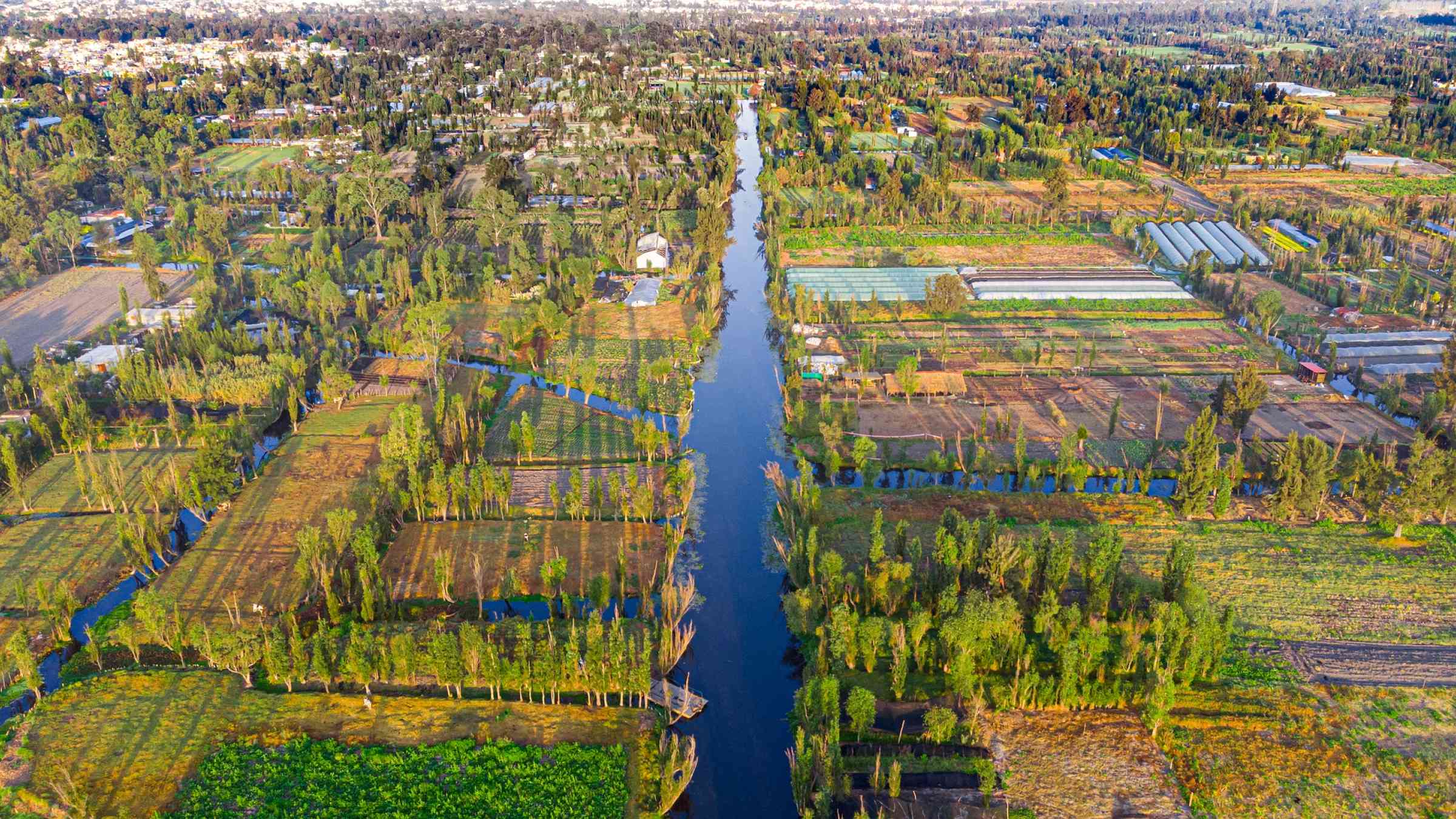Chinampas in Mexico is an indigenous and highly sustainable agriculture system

The chinampas agricultural system is a set of artificial floating islands, primarily used in southern Mexico; lake area Xochimilco in Mexico has the most famous present-day chinampas system. Chinampas are traditionally built based on oral wisdom transmitted since the time of the Aztecs.
The chinampas are composed by small islands in strips, built with the sediments from the lake bottom, branches and decaying vegetation, creating a web of channels. The channels form part of the irrigation system and have an average depth of 1.5 meters.
The construction of chinampa is based on several steps which includes outlining the limits of the chinampa in order to outline the perimeter of the chinampa, large ahuejote branches and stalks are cut, building the chinampa's structure by fixing a robust structure around the stakes and then forming the chinampa soil by filling the chinampa with two layers of soil, one with organic matter and one made out of sludge.
The chinampas have a world, domestic and local significance. Why is that?
Chinampas contribute to food and livelihood security
The chinampas are an important source of food for one of the most populated cities on the planet, generating 40 thousand tons of agricultural production per year.
The chinampa system has been an intensive farming method, expanding local food production through technological innovation, it has brought new land under cultivation and increased labor inputs. This efficient production form enables intensive cultivation throughout the year and it has been one of the main activities that have supported the regional economy.
Chinampas are crucial for local agrobiodiversity
The system stands out for having a great biodiversity: it houses 2% of the world's biodiversity and 11% of the national biodiversity with 139 species of vertebrates, 21 species of fish, six amphibians, 10 species of reptiles, 79 species of birds and 23 species of mammals.
It has been estimated that over the centuries, the production profile of the chinampas was transformed from a milpa production, where the maize was the main crop (Varadero chalqueño) and Mesoamerican vegetables (chile, tomato, squash, chilacayote and tomato) to a diversification and incorporation of species of diverse botanical nature of different social and commercial value that have offered to the chinampa producer greater options, as well as a better adaptation of its means of production to the environmental conditions.
Chinampas support local and traditional knowledge systems
The chinampas system also stands out for preserving ancestral agricultural knowledge and technologies, as chinamperos farmers preserve traditional prehispanic cultivation techniques that have been transmitted orally: in the chinampas you can still find four of the five main crops used by the Aztecs: corn, beans, pumpkin and amaranth.
Chinampas foster local cultures, value systems and social organizations
The cultural practices associated with chinampas activities manifest beliefs and worldviews that nourish popular piety and feed it off at the same time. The rituals and the popular and regional parties on the site, over the centuries, have come to established forms and systems of identity and unity within neighborhoods, chinampas, towns, and extended families.
Both equitable distribution of social power as well as community respect for private ownership of the chinampas, have been the underlying conditions in developing chinampa livelihoods. It has allowed favorable conditions emerge with high participation rates, within the local social fabric and under the setting of hierarchical relationships between the rural and the urban.
Chinampas complement local landscapes and seascapes features
The chinampa agricultural system of the lake area of Xochimilco, Mexico, represents a multifunctional activity complementary to the urban dynamics of Mexico City. In addition to its extensive biological wealth, the chinampa agroecosystems provide important ecosystem services to urban and peri-urban area. Its agroforestry elements and the channels, which are between 4 and 6 m average width that are used as means of transport navigated by canoes and trajineras, loaded with goods, farmers and tourists compose the chinampas landscape.
Chinampas serve as a disaster risk reduction solution
The chinampas serve to control flooding when excess water in the rainy season is diverted from Mexico City, working as vessels of regulation. Also, the humidity generated by the water deposited in the canals and wetlands, and evapotranspiration of vegetation, promotes the climate to be more humid, the most compact soil and less aggressive wind erosion in the microclimate of the southern zone city.